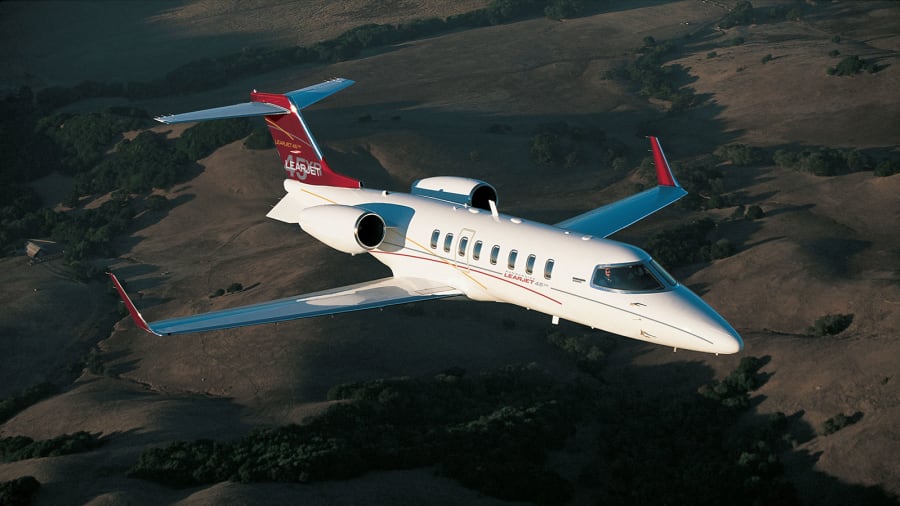
©Bombardier via CNN News
Pre-reading questions:
I will read each question. Then, please answer them.
- How often do you travel by plane?
- What is the biggest airport in your country?
Vocabulary:
I will read the words, meanings, and sample sentences. Then, repeat after me.
- must-have /muhst-uhv/
- prototype /PROH-tuh-tahyp/
- cabin /KAB-in/
- demand /dih-MAND/
- iconic /ahy-KON-ik/
[noun] – something that many people want to own
Mobile phones are a must-have for children nowadays.
[adjective] – the original model of something from which later forms are developed
The car they’re manufacturing is a prototype of a newer model.
[noun] – the area where passengers sit in an aircraft
The company wants to redesign the cabin to make passengers feel more comfortable.
[verb] – to ask for forcefully, in a way that shows that refusal is not expected and will not be accepted
Adam demands a refund on the computer he bought.
[adjective] – very famous or popular, especially being considered to represent particular opinions or a particular time
The Beatles was an iconic rock band in the 1960s.
Article reading:
Please read the whole article. Then, I will check your pronunciation and intonation.
With nearly 3,000 planes delivered since 1963, the Learjet was a well-known “stylish” business jet. The Learjet was a corporate must-have in the older generation where connections were long and nonstop flights were not common. Not only were executives brought from one place to another by the Learjet, but Hollywood stars as well when they need to shoot from different locations. In February, however, Learjet’s parent company Bombardier formally announced the end of its production to focus on Global and Challenger airplanes.
The Learjet was originally from a family of a Swiss prototype fighter jet. It was named after aviation and electronic founder Bill Lear, who also developed the predecessor of cassette tapes, the 8-track tape. The Learjet’s airplane cabin that provides a similar feeling to sitting in a comfortable family car was a favorite at the start of its development. But it had one big flaw: its short cabin height of 4’4″ (1.32 meters). It wasn’t a problem in the 1960s, but the new generation demands bigger ones. To date, the cabin height of Bombardier’s Global 7500/8000 aircraft is 6’2″ (1.8 meters), which is much larger than the Learjet’s. The legendary plane also had a 2,000-mile range, which was ideal for those in the 1960s who wanted to save time and effort. However, both the global economy and business aviation evolved from the 1970s to the 1990s, making the Learjet insufficient. Latest jets can go over 6,000 miles in over 12 hours.
There’s no denying that the Learjet has a long way to go to catch up to current airplanes. But as the world evolves, so does our mode of transportation, air travel included. Although this iconic jet’s reign has come to an end, it’s important to remember that the mastermind of business travel innovation was none other than the Learjet itself.
The Learjet was originally from a family of a Swiss prototype fighter jet. It was named after aviation and electronic founder Bill Lear, who also developed the predecessor of cassette tapes, the 8-track tape. The Learjet’s airplane cabin that provides a similar feeling to sitting in a comfortable family car was a favorite at the start of its development. But it had one big flaw: its short cabin height of 4’4″ (1.32 meters). It wasn’t a problem in the 1960s, but the new generation demands bigger ones. To date, the cabin height of Bombardier’s Global 7500/8000 aircraft is 6’2″ (1.8 meters), which is much larger than the Learjet’s. The legendary plane also had a 2,000-mile range, which was ideal for those in the 1960s who wanted to save time and effort. However, both the global economy and business aviation evolved from the 1970s to the 1990s, making the Learjet insufficient. Latest jets can go over 6,000 miles in over 12 hours.
There’s no denying that the Learjet has a long way to go to catch up to current airplanes. But as the world evolves, so does our mode of transportation, air travel included. Although this iconic jet’s reign has come to an end, it’s important to remember that the mastermind of business travel innovation was none other than the Learjet itself.
Comprehension questions
I will read each question. Then, please answer them based on the article.
- What was the Learjet used for since 1963?
- What did Bombardier announce in February?
- To whom was the Learjet named after?
- What was the Learjet cabin’s greatest flaw?
- How many miles can modern jets travel in over 12 hours?
Discussion questions
I will read each question. Then, please answer them.
- Would the Learjet catch up with modern business aviation if Bombardier did not stop its production? Please share your thoughts.
- What could other jets or planes learn from the Learjet’s design?
- Should aviation organizations preserve old Learjet models? Why or why not?
- What makes a plane or business jet high-quality?
- How has air travel changed the world?